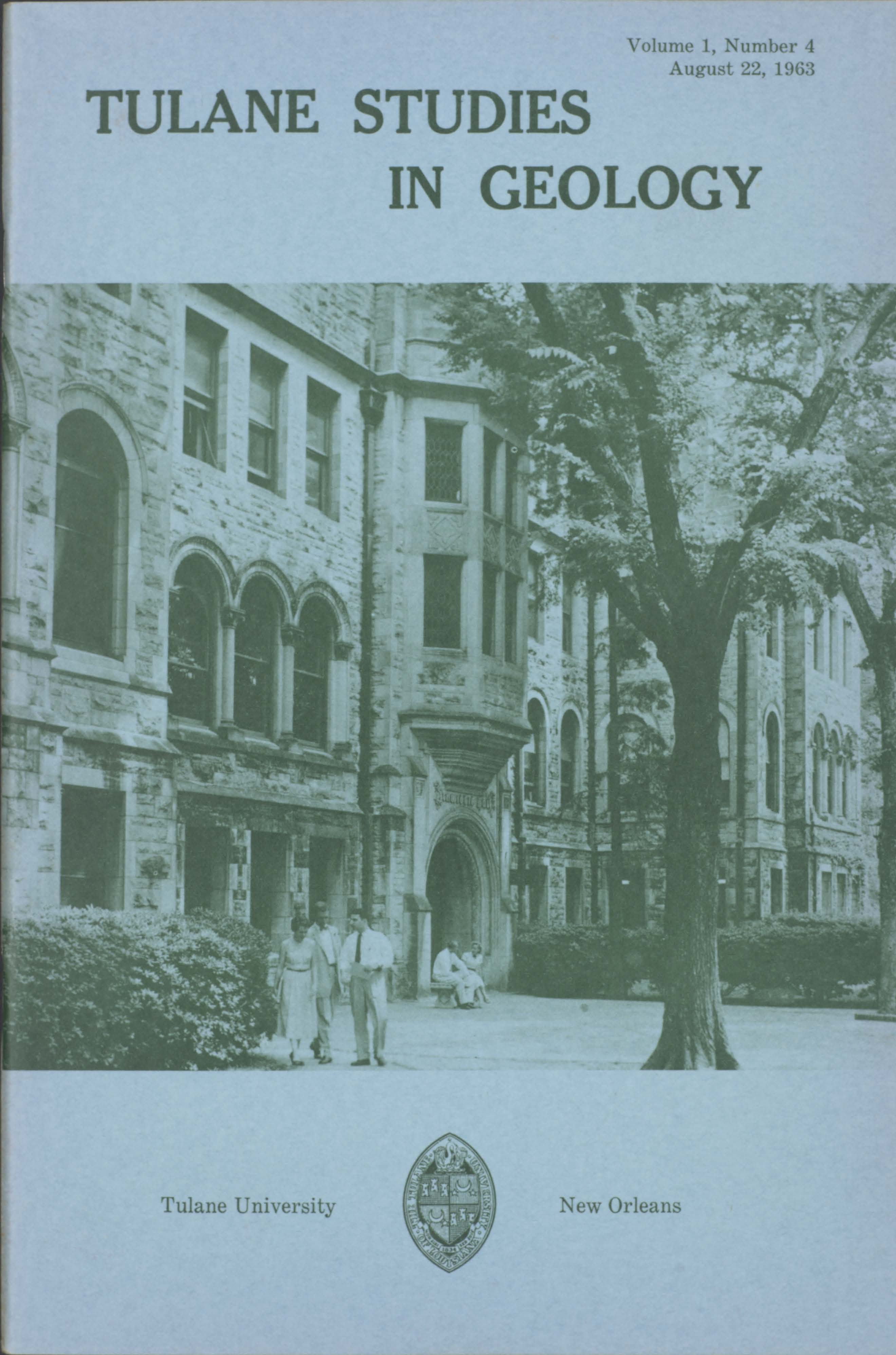Geology of the Canon De La Huasteca Area in the Sierra Madre Oriental, Nuevo Leon, Mexico
Abstract
The observations reported in the present paper result from investigations by the students at the Tulane University Summer Field Camp in Geology during the years 1960- 1962. The area involved is in the front range of the Sierra Madre Oriental of Mexico and includes the well-known Canon de la Huasteca and the valleys immediately to the south, locally known as the Valle de San Paulo and the Valle de Muralla. The area is a segment of the Los Muertos anticline whose core consists of the Upper Jurassic Zuloaga Limestone, which is much deformed and locally has been intruded by masses of gypsum. Overlying is a 1200 foot sequence of shales and siltstones that have Portlandian, Upper Jurassic fossils in the lower portion; these are here named the Muralla Shale. Gradationally above are almost 1200 feet of arkosic sandstones and arkose with minor conglomerates that contain an Upper Jurassic fauna, and are here named the San Paulo Sandstone. These two new formations are referred to the La Casita Group. Lower Cretaceous formations represented include the Taraises Formation in which two members can be recognized. The basal member, consisting of approximately 200 feet of shale and highly fossiliferous limestone is here named the Los Nogales Member. This member is of late Valangian and/ or early Hauterivian age, and rests on the San Paulo Sandstone with, apparently, a paraconformable contact. The main mountain ridges bordering the valleys are composed of the rudistid-bearing Cupido Limestone, 2300 feet thick, the very fossiliferous, marly La Pena Formation, 50 to 100 feet thick, and the thick-bedded Au- rora Limestone, incomplete sections of which form the outer flanks of the Los Muertos anticline. Near the western end of the Valle de Muralla an isolated mass of Tertiary (? ) clay rests upon the eroded edges of the Taraises Formation. The clays are believed to represent lacustrine deposition, but a wholly satisfactory explanation of their occurrence has yet to be advanced. Alluvium and colluvium, some of it cemented with caliche, masks the floors and lower slopes of the valleys. There is stratigraphic evidence of an eastwest trending fault along the floor of the Valle de San Paulo to the south of the present outcrop trend of the Zuloaga Limestone; it is suggested that movement along this fault may have been a contributory factor in the gypsum intrusions into the adjacent Zuloaga Limestone.Downloads
Download data is not yet available.

Downloads
Additional Files
Published
2017-03-03
Issue
Section
Articles